“In the world of food safety, the smallest detail can make the biggest impact.”
~Anonymous
Imagine a world where every bite of food we consume is backed by the most advanced guardian of safety: Artificial Intelligence (AI). This is not a slice of futuristic fiction but the reality of today’s food industry. As we delve into the fascinating intersection of technology and nourishment, this blog unveils the pivotal role AI plays in elevating global food safety standards. Join us as we explore how AI is enhancing and revolutionising how we safeguard our meals and, ultimately, our health.
AI: A New Frontier in Food Safety
“Food safety: a race against time and error, now championed by AI.” – Unattributed
Navigating the intricate path from farm to table, our food journey is laced with potential perils. The introduction of Artificial Intelligence (AI) into this equation is not just an advancement; it’s a revolution in food safety. With its unmatched prowess in data processing, AI emerges as a vigilant guardian, adept at identifying, predicting, and pre-empting hazards that threaten our food supply chain.
- Predictive Analytics: Preventing Contamination Before It Happens
One of the most significant contributions of AI in food safety is predictive analytics. By analysing vast amounts of data on weather patterns, production processes, and historical contamination incidents, AI can identify potential risks long before they become a problem.
“The future of food safety lies in our ability to smartly synthesize information”
~A food safety expert.
This forward-looking approach is not only about averting crises; it’s about reshaping the way we manage food safety. As AI continues to evolve, it’s turning predictive analytics from a novel tool into a staple of food safety protocols across the globe.
Fact: According to a report by MarketsandMarkets, the global AI in food and beverage market size is expected to grow to USD 29.94 billion by 2026, highlighting the increasing reliance on technology to safeguard our food.
- Traceability: The Digital Backbone of Food Safety
Traceability in the food supply chain is no longer a luxury but a necessity. Here, AI steps in as the digital sentinel, enhancing the traceability of food products. Its ability to swiftly track and isolate contaminated items is a game-changer. This rapid response capability is essential not only in thwarting widespread health crises but also in fortifying consumer confidence.
“In the dance of food safety, AI leads with precision and speed,” says a food industry analyst.
AI in Action: Real-World Applications
“AI in food safety is like a vigilant sentinel, always on duty, always precise.” – A food technology expert.
The realm of AI in food safety extends beyond theory into a vivid tapestry of real-world applications. From the pastoral landscapes of Dutch dairy farms to the bustling food processing units in the United States, AI’s role is as varied as it is significant.
- Dairy Farms: AI, The Milk Guardian
In the Netherlands, dairy farms are embracing AI to ensure the pristine quality of their milk. Here, AI serves as a meticulous guardian, monitoring milk quality in real-time. By analysing factors like temperature, fat content, and acidity levels, AI systems can predict spoilage, ensuring that only the freshest milk makes it to your morning cereal.
Did You Know? A study showed that AI applications in dairy farming could increase productivity by up to 20%.
- Food Processing: The AI Sentinel
Crossing the Atlantic, we find AI-driven sensors in U.S. food processing units acting as modern-day sentinels against pathogens. These sensors are the unsung heroes in our battle for food safety, capable of detecting the slightest presence of contaminants at a microscopic level.
- Smart Sensors: The Precision Maestros
These AI-powered sensors are not just tools; they are precision maestros. They conduct a symphony of safety checks on food products, ensuring that only those meeting the highest quality standards reach the consumer. This real-time monitoring is akin to having an army of vigilant inspectors, each equipped with the acuity to detect the minutest anomalies.
Fact: According to a report, AI-enabled sensors in food processing can reduce contamination-related costs by up to 30%.
- AI and Global Cuisine: A Culinary Safety Net
The impact of AI on food safety transcends borders, playing a pivotal role in global cuisine. From sushi restaurants in Tokyo employing AI for fish freshness to Italian wineries using AI to ensure the integrity of their vintages, AI’s culinary safety net is vast and all-encompassing.
- The Power of Data: AI’s Secret Ingredient
At the core of these diverse applications is AI’s ability to process and analyse vast amounts of data – its secret ingredient. This data-driven approach not only enhances food safety but also streamlines operations, reducing waste and improving efficiency.
The Human-AI Collaboration
“Technology is at its best when it brings people together.” – Matt Mullenweg
The synergy between human expertise and AI is critical. While AI provides the data, it is human interpretation and decision-making that drives effective action. This collaboration ensures a balanced approach to food safety, combining technological efficiency with human insight.
- The Art of Interpretation: Where Humans Excel
Humans excel in the art of interpretation, understanding the nuances and context that AI might overlook. It’s the human experts who read between the lines of data, applying their experience and knowledge to make informed decisions. This blend of AI-generated insights and human judgement is crucial in crafting nuanced food safety strategies.
Insight: A survey revealed that 70% of food safety professionals believe AI complements human decision-making in food safety management.
- Ethical Considerations and AI
In weaving AI into the fabric of food safety, we must tread carefully, considering the ethical implications. Data privacy is paramount, as is the awareness of potential biases in AI algorithms. The goal is to foster an ecosystem where AI aids in food safety without compromising ethical standards. Transparent and responsible use of AI is not just good practice; it’s a non-negotiable aspect of its implementation in food safety.
- The Ethical AI Framework: A Guiding Principle
Adopting an ethical AI framework involves rigorous testing, continuous monitoring, and an openness to adjust algorithms to avoid biases. It’s about building AI systems that not only comply with regulations but also align with moral and societal values.
The Future of Food Safety
“The future is already here – it’s just not evenly distributed.” – William Gibson
As we gaze into the horizon, AI emerges as a beacon of innovation, illuminating the path to advanced food safety. However, the illumination isn’t uniform; the challenge lies in ensuring equitable access to this transformative technology. Achieving a universally safer food system hinges on bridging the technological divide, ensuring that AI’s benefits in food safety are not a privilege but a global standard.
- Universal Access: A Goal to Aspire
The pursuit of universal access to AI in food safety is not just about technology distribution; it’s about knowledge sharing, training, and collaboration across borders and sectors. It’s an endeavour to democratise AI, making it a tool accessible to all, regardless of geography or economic standing.
- The Role of Global Partnerships
Fostering global partnerships plays a critical role in this journey. By sharing resources, knowledge, and best practices, we can accelerate the adoption of AI in food safety worldwide. This global collaboration is key to creating a food system that is safe, resilient, and sustainable.
Conclusion: Embracing AI for a Safer Tomorrow
The integration of AI in food safety marks a pivotal shift from reactive measures to proactive assurance. This technology, now a critical guardian in our food supply chain, exemplifies the fusion of innovation and vigilance.
As AI redefines food safety, it is our collective endeavour to ensure its responsible and equitable application. Embracing this AI-driven future, we step into an era where the safety of our food transcends borders, becoming a universal standard, a shared commitment to health and quality for all.
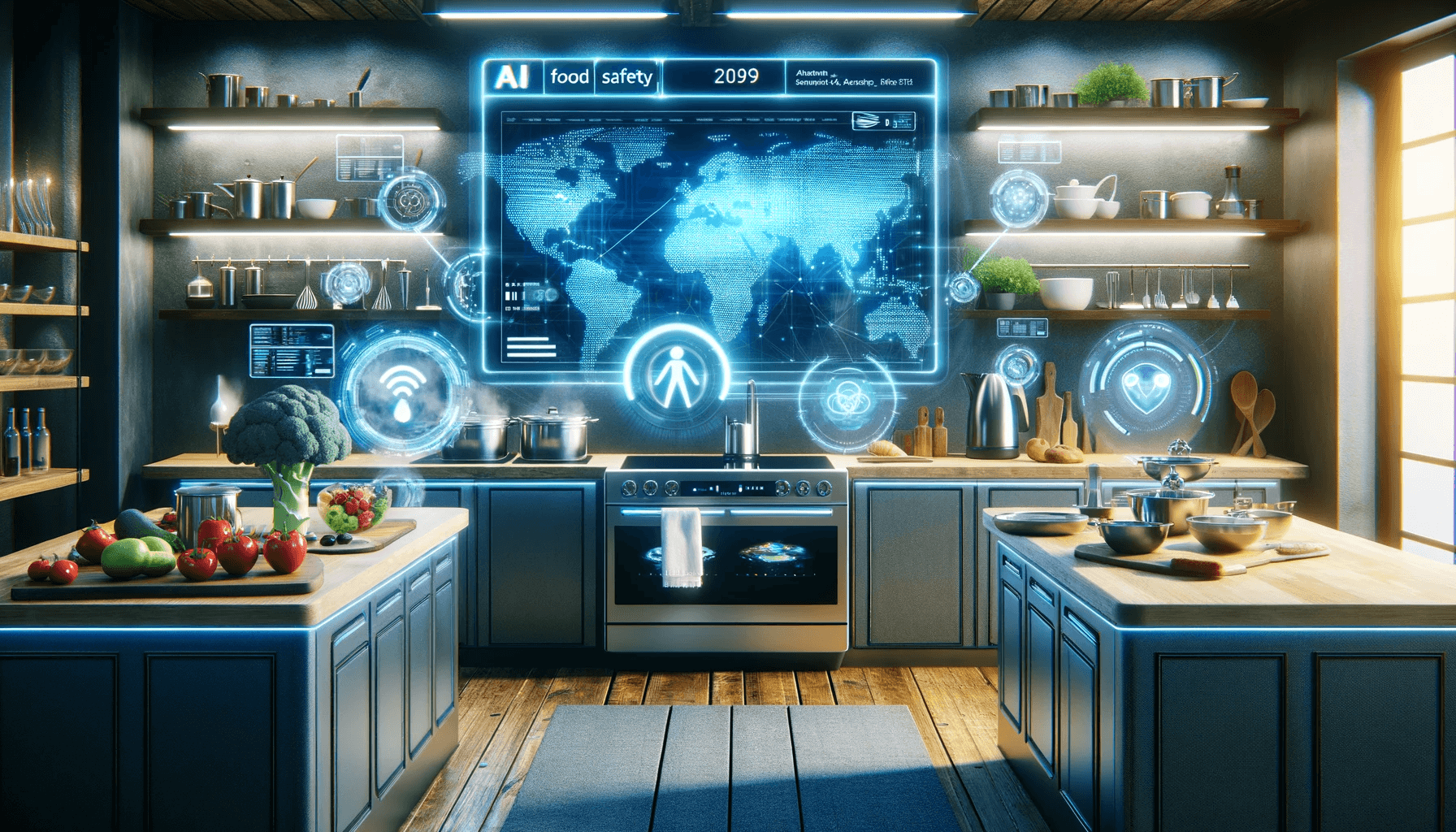

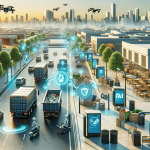
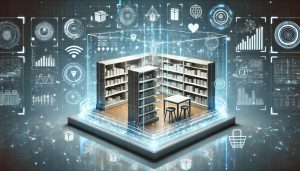

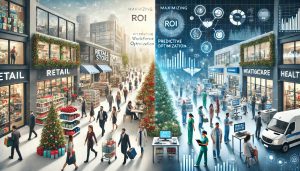
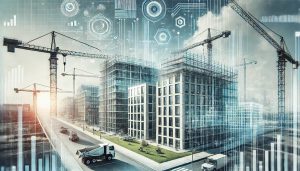
No comment yet, add your voice below!